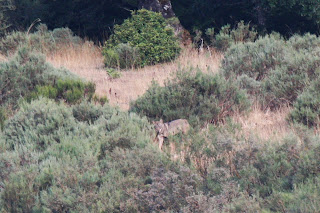Iberian Grey Wolf
In recent years it has become more and more apparent that are wolves are not just keystone species and at the top of the food chain, but that they are actually the most influential and important species in the entire northern hemisphere. The actual geography of the land and the diversity of habitats and species that occur within it is mainly due to presence of wolves. Where wolves have been extirpated, ecosystems collapse, populations become out of balance, climate change is increased, biodiversity decreases, flooding increases, herbivores damage agriculture, forestry is decreased and we have to spend millions of pounds trying and failing to do these jobs that wolves do for free. Aside from the science, wolves are good for the soul, without them, I feel countryside is not wild, but empty and degraded. When you walk through a landscape that wolves have created, it feels truly natural and exciting and that was what the feeling I had walking through the mountains and valleys of the Picos de Europa recently.
Cantabrian brown bear footprint.
In August, we made a trip to Riano, which is a small village on the southern edge of the Picos de Europa National Park in the Spanish county of Asturias. In August the hay meadows in the valleys of the Picos de Europa are cut, exposing the burrows of field and "terrestrial" water voles which make easy pickings for the European wildcat population here. According to research this area has the highest density of wildcat in Europe and I can believe it. During 5 excursions specifically in search of wildcat, we found cats each time and in total we saw a staggering 10 - 11 different cats. The subspecies here is also the largest in Europe and they differ slightly from the Scottish subspecies in pelage and the presence of white flashes on the chest of the young cats. The population has also remained almost completely free from hybridisation with feral domestic cats, probably because the population hasn't suffered a dramatic decline the way it has in Scotland and other areas.
European wildcats
Iberian grey wolf
Some of the other interesting fauna, we encountered included the localised Schreiber's green lizard (a female pictured below), numerous raptors including Griffon and Egyptian vultures, many migrating honey buzzards, black woodpeckers, red-rumped swallows and many butterflies which I am still identifying.
Honey buzzard
White stork
European wall lizard
Schreiber's green lizard











